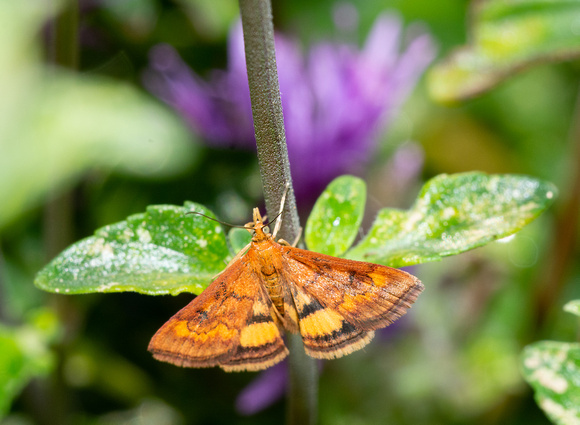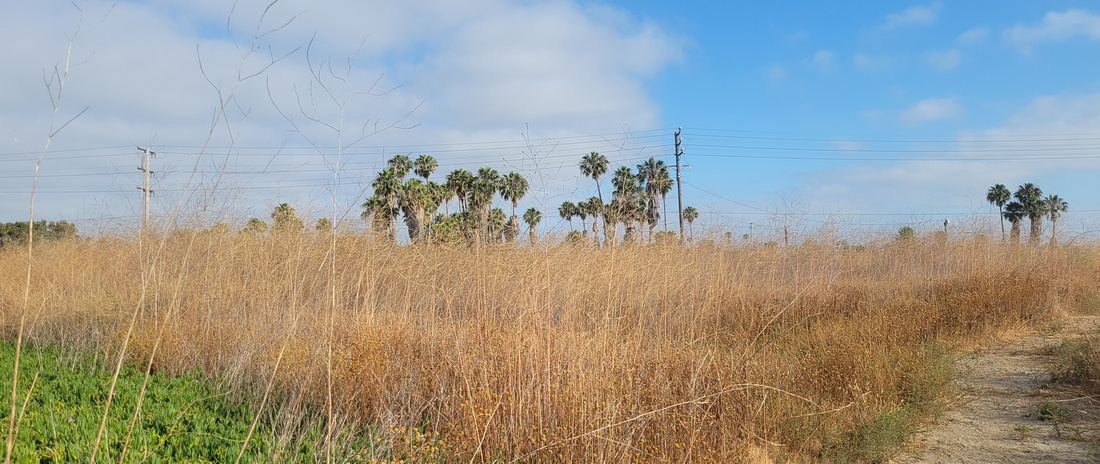Sights of June 2024 - Backyarding
To quote biologist /geologist Louis Agassiz: "I spent the summer traveling; I got halfway across my back yard."
June is typically slow for birding, unless you go up to the mountains, which I did not. Instead I focused primarily on my own yard. I stocked my feeders with sugar-water for the hummers, and jelly for the Hooded Orioles, which was also a favorite of mockingbirds, squirrels, and bees. I searched for insects in my yard and was quite successful. I tried to spend some time every day this month (I only missed a few). I even hosted some of my fellow insect enthusiasts for a mini party and bioblitz, adding to my iNaturalist Project tracking observations in My Urban Yard.
The joy of the backyard is that it is close, no commute, and you can step out for short bursts of time, so it fits into your schedule rather easily. It is a welcome escape into nature. I even made some art inspired by my yard (a continuing project). I don't know if anyone beat me to it, but I am coining the term "backyarding".
If you find the number of photos overwhelming, just consider the incredible diversity that is found in one native garden in just one month. That is the point. By planting even a small native garden, you can help support biodiversity, which is rapidly disappearing with nonnative plants, urbanization, and pesticide use.
I found several interesting insects/spiders new to me, as well as finding beauty in some of the familiar ones.
- Ant-mimic Sac Spider Castianeira athena: My mother called me into her room because she saw a large dark ant. It turned out to be this ant-mimic spider. I guess it is true to its name for at least it fooled my mother. Some spiders in this genus mimic specific ants and some just the illusion of an ant. This one has a long abdomen and the front legs are held out front looking somewhat like an ant's antenna. While the photo makes it look large and with pale markings, in the dark room it looked more like a large ant.
- Neoscona Spiderling shedding its exoskeleton: I was in the right place at the right time to see this tiny spiderling hanging upside down using gravity to help it escape its outgrown exoskeleton. It hung by a thread until it was out. It then tried to release the shed exuvium and move to a more concealed spot on the leaf.
- Picket-boring Aphid Wasp Passaloecus sp.: As their name implies, these wasps are fond of aphids, at least to provision their nests for their young. They make their nests in holes in wood made by other insects. My garden has many different species of aphids for them to choose from, and my husband is a woodworker, so our yard has many logs just waiting to become bowls or furniture. I saw this wasp going in and out of one of the holes in one of the logs. Fortunately my husband has other projects and logs to work with so I suspect this one will be safe until next spring when the new wasps emerge. Thank you wasps for controlling my aphids.
- Lance Fly Lonchaea sp.: The larvae of this fly live behind bark. Again the woodpile comes in handy.
- Western Drywood Termites Incisitermes minor (I think that is the species): After using the chainsaw to split the log which would soon become a turned bowl, the center of the log revealed termites. Of course my husband called me over. It is interesting to see the tunnels they make. I know some have been to work on places in my house too. I will not be too saddened at the loss of their home.
- Chalcid Wasp Homalotylus terminalis: A lady beetle larva caught my eye because it looked unusual. When I looked at the photo, I saw holes in it where some sort of parasitoid had emerged. And then I noticed just above it on the leaf was the parasitoid wasp itself!. A parasite lives off a host, but doesn't kill it. Parasitoids eventually do kill the host. In this case a Chalcid wasp laid eggs inside the lady beetle larva. When the eggs hatched, the wasp larvae fed on the tissue of the lady beetle, pupated, and then emerged. I have seen parasitoid wasps and I have seen host larvae with exit wounds, but never before the two together. While we like lady beetles, and I was sad for it, these tiny parasitoid wasps are necessary as a check on other insect populations.
- Acmon Blue Butterfly Icaricia acmon: While this butterfly is abundant in our local foothills, mountains, and other parts of the county, this is the first I've seen in Long Beach. In fact, there are only about five observations shown on iNaturalist for Long Beach over several years. This one was laying eggs on my buckwheat. Fingers crossed for successful offspring.
- California Pyrausta Moth Pyrausta californicalis: This moth is such a beautiful moth. It has been laying eggs on San Miguel Savory Clinopodium chandleri. They are hard to photograph because they flit around and prefer to land on the underside of the leaves. Maybe instinct, but this behavior is smart to avoid predators and heat.
I am very slowly taking an on-line art class. It has provided inspiration. I am focusing my work on my backyard. One of the assignments was to make 'vignettes' by arranging clippings and found pieces, and then photographing them before sending them back to compost. I haven't really progressed much past that. It is fast and fun. Not an assignment, but I decided to do a photo study of all the different greens in my yard.
In addition to Hooded Orioles competing with bees for grape jelly at my feeder, I saw a few nice birds at local parks. A Rose-breasted Grosbeak, begging baby Tree Swallows, a Yellow-breasted Chat, baby Least Bitterns, baby Green Herons, and a very ratty looking Orange-crowned Warbler were some of the highlights. At one park I saw California Ground Squirrels. It looked like a teenager was still trying to get his mother to let him nurse. She was not receptive.
Birding is slow in June on the Wetlands, but I always love going out on the monthly survey to see some of the subtle changes. I focused on the colors, insects, and hidden creatures that make it home. We are seeing fledgling Belding's Savanna Sparrows. An American Kestrel was dive-bombing a Red-tailed Hawk. Some of the regular team was off for the summer, so it was only two of us. We covered a wider area which took us closer to Gum Grove Park where a Cooper's Hawk was perched in a tree after having been chased by Northern Rough-winged Swallows.
Happy nature watching. Go "backyarding" and tell me what you find.
Follow me on Facebook: https://www.facebook.com/KimMooreNaturalist/
|
How to view photos with species names:
|
Watch the slideshows or click on the links to look through at your own pace. Links open in a new tab.
Local Stuff: https://kimssight.zenfolio.com/new_jun-2024
Art inspired by my yard: https://kimssight.zenfolio.com/art_in_my_yard
Los Cerritos Wetlands Monthly Survey: https://kimssight.zenfolio.com/hellman_jun_2023



